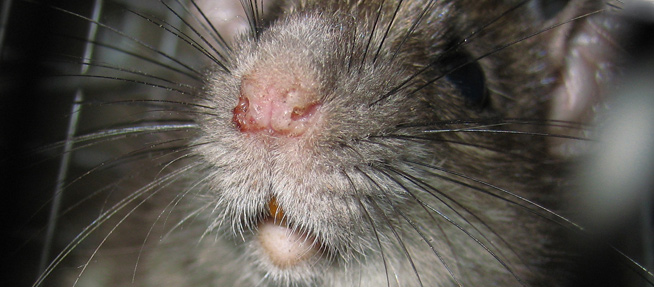If you have noises coming from your attic all of a sudden, there is a good chance it's a wild animal up there, and it could be one of any number of wild animals too. There are a few well-known culprits when it comes to animals in the attic, although the number one suspects are usually bats, rats (or mice), squirrels, and even opossums and raccoons, although slightly less regularly.

Even if the rats do not enter a “living area” of your home – sticking to the attic and not the main rooms of the home, for example, they can still pose a number of threats, and that's why you cannot ignore the problem. There are DIY methods you can use, if you don't want to hire a wildlife control specialist, but we would always recommend going with lethal snap traps, rather than live cage traps. Under no circumstances should you use poison, and this is even more so the case if you have pets, animals, or young children in your home. You can buy “rat killer boxes” now, but these still aren't overly effective – it can take days, and in some cases, even weeks, for the poison to have any effect on a rat. They generally work to stop the clotting action of the rats blood, causing internal bleeding. This can take up to 14 days to completely kill the rat. As you can imagine, this is highly inhumane.
We would recommend that you consider using snap traps in order to kill the rat, and to place these in areas that other animals and small humans can't reach. You should buy snap traps specifically built for the animal you think you have. Mouse traps will be too small for a rat, and rat traps are too big for mice. They might not do the job properly, only partly capturing the mouse.
You could use live cage traps, but although you may think they were the most humane option, relocated rats generally die only a few days after they are re-released into the wild. Essentially, this leaves you with the snap traps as your best option.
In order to find the best places to put your traps, buy yourself a cheap bag of flour. Sprinkle this across the floor, and leave it there for a few days. If there are lots of footprints in the flour, that's the area the rats are frequenting the most, and that's the area in which you should focus your attention when placing the traps. You shouldn't place traps unless you have sealed up the holes the rats were using to get in though. If you do, the rats will just keep coming, and you won't ever get rid of the problem entirely.
Go back to the Rats in the Attic home page.

What to do if there is a nest of rats in your attic
Once inside the home and attic, rats and mice will scratch at the attic and walls, which is often what gives the presence of these pests away. Also, people might see the droppings that are left. A common problem caused by rats in the attic are when they begin chewing on electrical wires; this will cause obvious issues to the structure and integrity of your house as a broken cable can cause electrocution risks, as well as an electrocuted rodent, rotting and causing additional health risks and attracting further pests to the corpse.
So if you’ve noticed these things or even seen a rat, how do you go about evicting these unwanted guests?
First, inspect your entire home to find all the open holes, gaps, or cracks that rats can use to get into the building. This includes vents, eave gaps, roof lines, etc. Check from the ground up, and check if any trees are touching the top of your roof as rats will use these as a highway into your home. If you do have a tree touching the house, you have an extra job to cut this back to prevent further rats using these branches to access your home. Once inside, rats will scurry through any part of the building including, the walls, the ceiling, and get into the attic, where they like to live and nest on account of the rising heat creating a warm environment to create a perfect nesting atmosphere.
Next, make sure to seal up all of the potential entry holes that you find, steel plating, which rats can't chew through is especially useful. Use a sealant to block off all airflow, and to discourage rats from trying to get inside.
Then, once you are fully confident that no more rats can get in and everything is sealed, you should be setting snap traps, these are the oldest and most reliable forms of traps that will kill rats quickly and humanely. The design of these traps is such that they can be placed on beams that rats use and be placed in other areas, such as roof insulation, and still work exactly as intended.
Finally, check the traps on a regular basis to ensure that no trapped, dead rat is either rotting or suffering if the trap didn’t exterminate it immediately. Once you are confident that the last rat has been trapped and no more exist then you can set about cleaning the attic after it has been aired out.








